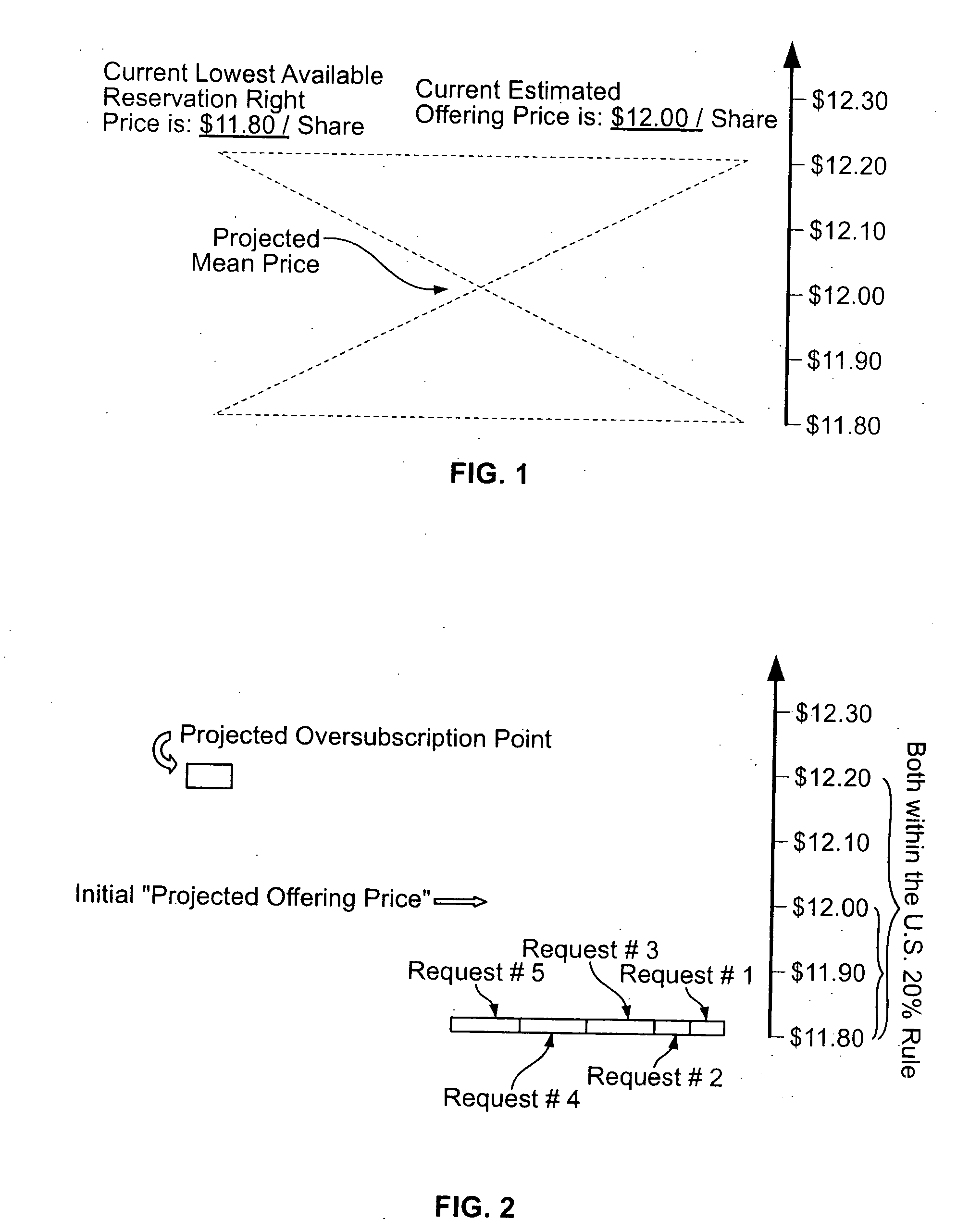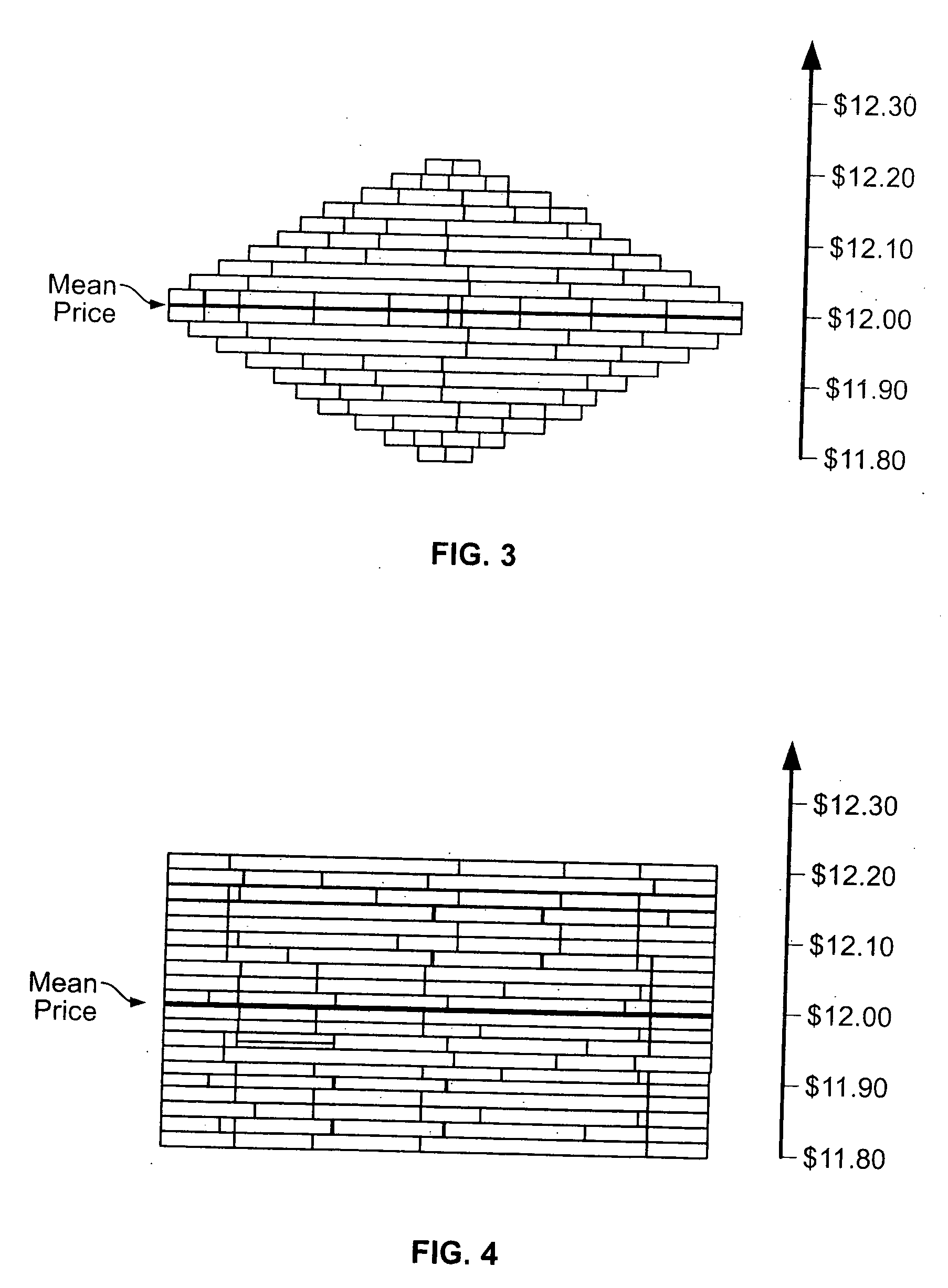Method and system for optimal pricing and allocation with limits on units offered
a technology of optimal pricing and allocation, applied in the field of optimal pricing and information distribution, can solve the problems of reducing the availability of units, reducing the value of books, and reducing so as to reduce the volatility of secondary markets, increase the availability, and reduce the cost of equity and/or debt financing.
- Summary
- Abstract
- Description
- Claims
- Application Information
AI Technical Summary
Benefits of technology
Problems solved by technology
Method used
Image
Examples
Embodiment Construction
Overview
[0058] The present system and method are capable of building what is referred to here as a Bidstream. A Bidstream is created by the collection of indications of demand (also referred to herein as reservations and feedback i.e., a report) of the aggregate demand. Prior reservations can be provided to some or all Participants. Various embodiments accomplish this by establishing and building a Bidstream of the demand for an anticipated new issuance, securitization of rights to assets, or for the sale of units of goods / services through the Reservation Rights. The Bidstream can be represented by a graphic depiction of Reservation Rights or BidBlock units, organized horizontally and / or vertically on a visual computer display, called a Demand Display screen. Each Participant and / or their agent requests a quantity of reservations of BidBlocks at price points in the Bidstream. These reservation requests are then accepted and registered by the system if those BidBlocks are still ava...
PUM
 Login to View More
Login to View More Abstract
Description
Claims
Application Information
 Login to View More
Login to View More - R&D
- Intellectual Property
- Life Sciences
- Materials
- Tech Scout
- Unparalleled Data Quality
- Higher Quality Content
- 60% Fewer Hallucinations
Browse by: Latest US Patents, China's latest patents, Technical Efficacy Thesaurus, Application Domain, Technology Topic, Popular Technical Reports.
© 2025 PatSnap. All rights reserved.Legal|Privacy policy|Modern Slavery Act Transparency Statement|Sitemap|About US| Contact US: help@patsnap.com



